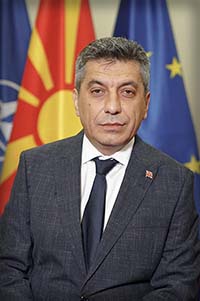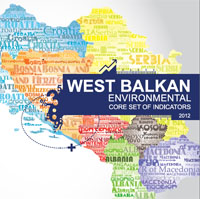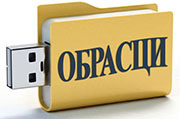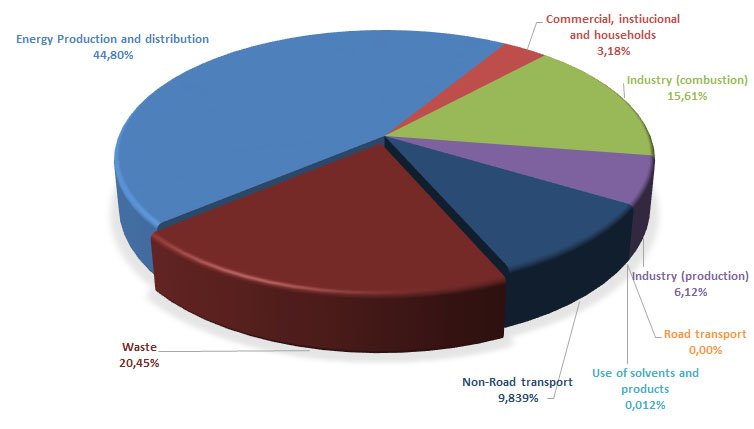| EMMISSION OF HEAVY METALS – MERCURY (Hg) |
The indicator tracks the trends inmercury (Hg).
t (tons per year)
In 1990, the overall national emissions of Hg amounted to 0.62 t, followed by constant reduction in emissions to reach 0.22 t or reduction by 65% in 2016 compared to 1990. The most significant reductions in Hg emissions occurred in NFR category 2 – Industrial processes (production of metals), due to the termination of the operation of the lead and zinc smeltery in Veles in 2003. .
The Diagram below shows annual trend in mercury (Hg) emissions for the period 1990to2016.
Diagram 1.Trend in emissions of mercury (Hg)
Under the CARDS Programme, Inventory of air emissions of the main pollutants in the country was established in 2005 in accordance with the EMEP methodology by individual sectors, i.e. activities, and in 2014 Inventory including all pollutants was prepared.
Sectors based on the above mentioned methodology and SNAP – selective nomenclature of air pollution are presented in the table below:
| Sector |
| Energy Production and distribution |
| Commercial, instiucional and households |
| Industry (combustion) |
| Industry (production) |
| Fugitive emissions |
| Use of solvents and products |
| Road transport |
| Non-Road transport |
| Waste |
| Agriculture |
| Other |
The most important source of Hg emissions in 2016 was the sector Energy production and distributionwith a share of 44,8% in the overall mercury emissions. Second sector with a share of 20,5% is the sector Waste followed by sectors Industry (combustion) and Industry (production) with a share of 15,6% and 9,8% in the overall mercury emissions, respectively.
Diagram 2. Emissions ofmercury (Hg) bysectors r in 2016
Which different sectors and processes contribute to emissions of mercury (Hg)?
The main sources of Hg emissions in the period 1990-2016 were: the NFR category 2 – Industrial processes (till 2004) with share of 64% in 1990, and since 2005 there is a significant decrease in mercury emissions from this source and in 2016 participates only with 6% in total emissions of Hg and NFR category 1A1 Energyindustries with share of 28% in 1990,whereas although the quantitative values of Hg emissions from this category are reduced in 2016, this category accounts with the highest share of 45%. . Total emissions of mercury in 2016 were reduced by 65% compared to 1990, while compared to 2015 they were reduced by 15%.The most significant reductions were observed in 2 – Industrial processes (production of metals), as lead and zinc smeltery in Veles terminated the operation in 2003. Emissions from this NFR category in 2016 were reduced by 97% compared to 1990, while compared to 2015 were reduced by 72% primarily due to the change in the methodology for calculating the emissions from the production of metals (iron and steel production). For the NFR category 1A1 mercury emissions in 2016 are decreased by 44% compared to 1990, while compared to 2015 the reduction is 17%.
Diagram 3. Emissions of mercury (Hg) by NFR categories per year
 Data coverage: excel_1, excel_2
Data coverage: excel_1, excel_2
Sources of data: The data used refers to overall national emissions and emissions categorized by NFR delivered by EEA member and collaborating states to EEA and Secretariat of the United Nations. Data is accessible per country on the following web address:http://cdr.eionet.europa.eu/mk/un/clrtap/inventories/envwovm7g/.
- Methodology for indicator calculation
The methodology for this indicator calculation is based on calculated national emissions and emissions by NFR categories of this pollutant as reported to EEA (European Environmental Agency) and UNECE/EMEP (United Nations Economic Commission for Europe/Cooperative programme for monitoring and evaluation for transboundary air pollution transfer under the Convention on Transboundary Air Pollution Transfer) in February 2016. Data used in this report is in accordance with the data submitted, the difference being that additional allocation of national emissions has been made apart from NFR (as sent to international organizations) also by sectors.
Methodology used for calculation and presentation of this indicator is given in EMEP/EEA Guidebook for inventory of air pollutant emissions of 2013and Guidebooko of 2016 (http://www.eea.europa.eu/publications/emep-eea-guidebook-2013, Technical report no. 12/2013, ЕЕА. anddeLeeuw, F. (2002) and http://www.eea.europa.eu/publications/emep-eea-guidebook-2016). Set of emission indicators of long-range transboundary air pollution, Environmental science and policy.
Action Plan for European Partnership, as well as National Plan for approximation of the national legislation with European regulations specifying bylaws that need to be prepared have been adopted.
The National Environmental Action Plan (NEAP II) was adopted. It contains the measures that need to be taken to improve the overall status of air quality, including the reduction of emissions of acidifying substances. The National Plan for Ambient Air Protection for the period 2012 to 2017 specifying the measures for air protection on national level and the National Programme for gradual air emissions reduction by 2020 have been adopted in order to define and implement measures on national level.
At the same time, for the purpose of air quality improvement in certain local self-government units (LSGUs) with action plans, program was prepared for the City of Bitola, Air quality plans and short term action plans for city of Skopje and city of Tetovo are prepared in the Twining project “Further strengthening the capacities for effective implementation of the acquis in the field of air quality”, which were adopted by the councils of the municipalities. The municipality of Veles also has prepared and adopted air quality plan in November 2017.
With regards to other international agreements referring to mercury the Republic of Macedonia, through the Ministry of Environment and Physical Planning, in consultation with UNEP, submitted a draft project to the GEF in order to make a synthesis and review of the current situation with the presence and management of mercury in the country.
By signing the Minatom Convention, the Republic of Macedonia was granted the right to access funds intended for the preparation of such a project. The project was approved in 2015, and was carried out in the period April 2016-April 2018.
With this project, the Republic of Macedonia managed to prepare the first inventory of emissions and releases of mercury in the environment, an institutional and legal framework for the management of mercury in the Republic of Macedonia and other relevant data.
Does any of the national documents set target or target should be achieved in accordance with other international documents?
National strategic documents listed as references in the above text provide guidelines and specify actions that should be undertaken as a matter of priority. It is important to mention thatbylaws have been prepared in the area of air emissions transposing Directives 96/61/EC, 2000/81/EC, 2000/76/EC, 99/13/EC and 2001/81/EC, ranging between 90 and 100%.
In accordance with the requirements of the UNECE Convention on Long-Range Transboundary Air Pollution, inventory based on EMEP/EEA Guidebook for inventory of polluting substances into the air, setting the target of regular inventory of pollutants in tons per year following the n-2 principle, where n is the current year.
Also, targets – basic obligations for this polluting substance are also set in the Protocol to the 1979 UNECE Convention on Long-Range Transboundary Air Pollution concerning heavy metals, ratified in our country in 2010 (Official Gazette of RM no.135/2010).
Under the Protocol, national overall emissions of Hg in n-2 year (where n is the current year) should not exceed the overall emission calculated for 1990 (taken as baseline year). The Republic of Macedonia is in compliance with this Protocol considering the emissions presented here for 2016. Compared to 1990, emissions of this pollutant have been reduced by 65%.
Furthermore the reduction of mercury is accordance with requirements set down in Minamata convention for reduction of mercury in the environment which has been signed by our country.
Legal basis
The Law on Ambient Air Quality adopted in August 2004 and amended several times afterwards (Official Gazette of RM no. 67/2004, 92/2007, 83/2009, 35/10, 47/11, 100/12, 163/2013, 10/2015 и 146/2015) is framework law in the area of air. The goals of this Law include avoiding, prevention and reduction of harmful effects on human health and environment as a whole, prevention and abatement of pollutions mercurying to climate change, as well as provision of appropriate information on the quality of ambient air.
On the basis of the Law on Ambient Air Quality, 16 bylaws were prepared and adopted to introduce limit values for air quality and air emissions, methodology of air quality and air emissions monitoring, manner of preparation of planning documents for air protection against pollution, manner of informing the citizens and international organizations, etc.
With regard to obligations for calculation of the emissions of mercury (Hg), the following protocol and convention as international ratified agreements are of relevance:
- Protocol to the 1979 UNECE Convention on Long-Range Transboundary Air Pollution concerning heavy metals, ratified in our country in 2010 (Official Gazette of RM no.135/2010).
- Minamata Convention on Mercury, which was signed on 25 July 2014.
- Reporting obligations towards international agreements – UNECE-CLRTAP and ЕЕА
- Annual Report of Processed Data on Air Emissions
| Code | Title of the indicator | Compliance with CSI ЕЕА or other indicators | Classification by DPSIR | Type | Linkage with area | Frequency of publication | |
| MK NI 063 | Emissions of heavy metals – mercury (Hg) | EEA
UNECE |
APE 005
A1/8 |
P | А |
|
annually |







































































